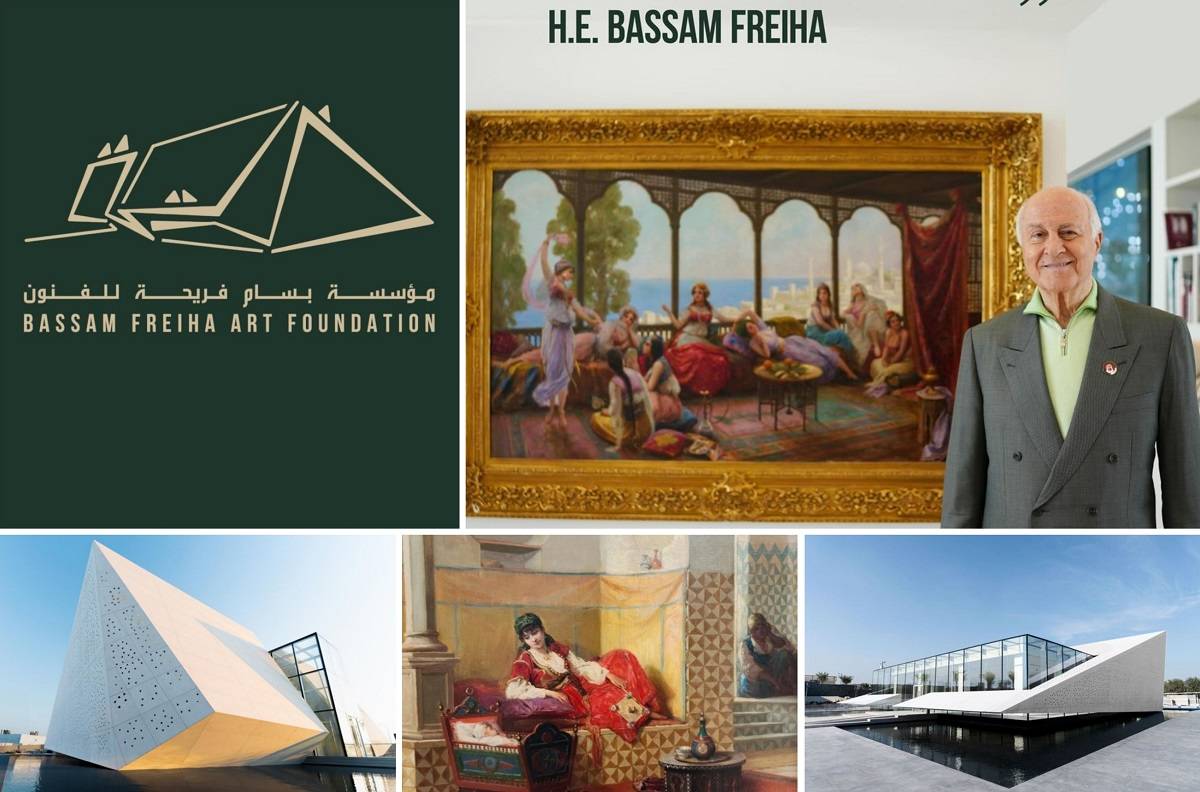
Bassam Freiha Art Foundation set to open in Abu Dhabi’s Saadiyat Cultural District
The non-profit institution is founded by philanthropist and art collector Bassam Freiha and is the first and only private art foundation in the Cultural District.
ArtDayME: Bassam Freiha Art Foundation (BFAF) will open its doors on 4 March 2024, marking the newest addition to Abu Dhabi’s Saadiyat Cultural District. The non-profit institution is founded by philanthropist and art collector Bassam Freiha and is the first and only private art foundation in the Cultural District.
Dedicated to showcasing global art collections, BFAF, located on Saadiyat Island, will offer audiences the opportunity to discover rarely seen works drawn from private collections locally, regionally and internationally. In addition to its exhibition programme, the foundation will cultivate an extensive and inclusive programme of cultural and educational initiatives.

Bassam Freiha said: “I aim for the Bassam Freiha Art Foundation to become a flagship space inspiring other collectors to share their masterpieces with the public and contribute to the thriving cultural scene in the region. My collection reflects my personal journey, which was guided by the power of art to challenge prevailing narratives and its capacity to serve as a reflection of society. I hope the foundation will inspire the next generation of art patrons and foster a culture of patronage, a critical element in the arts ecosystem.”

In line with its mission to showcase exhibitions curated around highlights from private collections, the inaugural exhibition, Echoes of the Orient, will feature works from the orientalist movement from Bassam Freiha’s private collection juxtaposed with 19th century photography, and works by renowned contemporary and modern Arab artists.
Curated by BFAF Director of Exhibitions Michaela Watrelot, Echoes of the Orient offers a window into the West's dialogue with the East. Centred on the theme of femininity as envisioned through the orientalist art movement – from candid representations of odalisques in the harem to depictions of maternal affection – the exhibition navigates the complex interplay of reality and fantasy which has historically defined orientalist art.

It also reclaims the Orientalist narrative by juxtaposing Western portrayals by Rudolphe Ernst, Léon Comerre, Paul Leroy, Jan-Baptist Huysmans and Fabio Fabbi from the Freiha Collection with works by Arab modernists including Habib Srour, Moustafa Faroukh, Cesar Gemayel, Tawfik Tarek and early works by acclaimed Emirati artist Abdul Qader Al Rais, and 19th-century photography from the Orientalist art movement by Gabriel Lékégian, Jean Pascal Sébah, Tancrede Dumas and Hippolyte Arnoux among others.

Michaela Watrelot said: “This juxtaposition aims to catalyse a West-East dialogue surrounding the orientalist movement, promote critical thinking about the existing narrative ascribed to the orientalist art, and foster a deeper understanding of cultural exchange which transcends time and geography. The photographs act as a visual bridge between the Orientalist fantasies captured in the paintings and the realities as viewed through the stylised lens of Western photographers.”

Echoes of the Orient will run alongside an exhibition in the foundation’s annex gallery. Titled Reclaiming Visions, it will feature the photographic work of US-based Iraqi-Palestinian artist Sama Alshaibi from her Carry Over series alongside poetic sculptures by Emirati artist Azza Al Qubaisi, in dialogue with 19th century portrait photography from the Orientalist art movement by Alexandre Leroux, and Aram Alban. The exhibition critically explores the exoticised representations of Arab women in historical images and navigates the nuanced interplay of history, power, and representation to ultimately reclaim the narrative. Alshaibi’s photographs, which employ the same albumen photogravure printing processes as 19th century photographer did, serve as a connection point between historical imagery and contemporary discourse and disrupt Western paradigms. As for Al Qubaisi’s sculptures, they reinterpret the symbolism of the veil, a traditional woman’s head cover, within a modern context.


LEAVE A RELPY